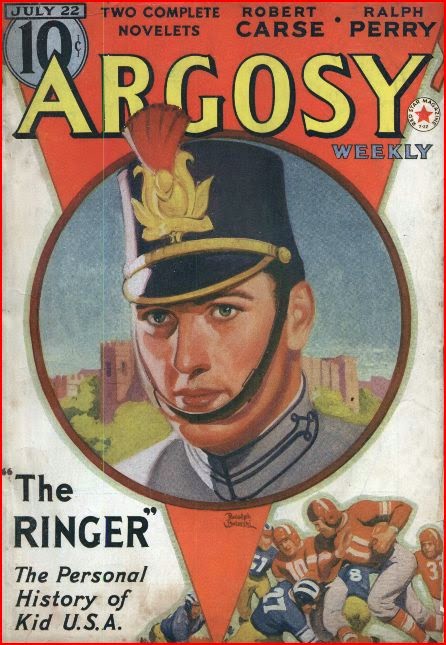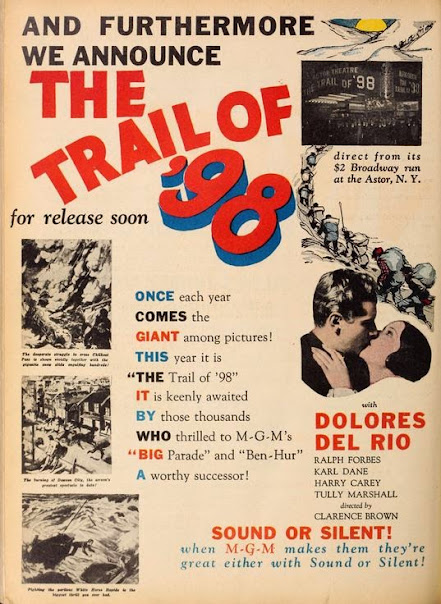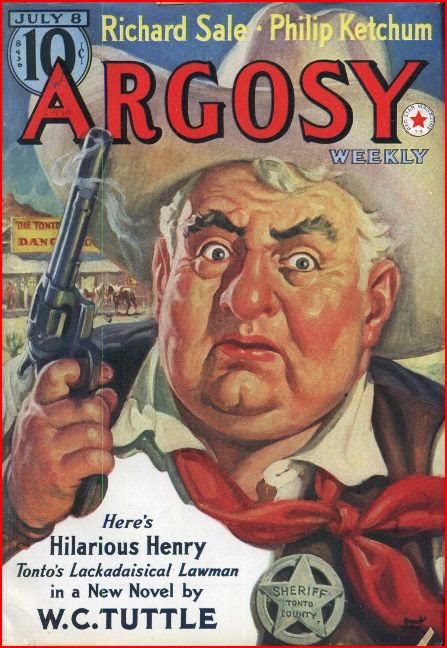 I
If nothing is real, then everything is permitted. Thus reads the sutra of Buddhist comedy, as written by the sage Stephen Chow. His best-known text is
Kung Fu Hustle, the global sensation of a decade ago.
Journey to the West is only his second film as a director since then; Chow wasted some time developing a cross-cultural team-up with Seth Rogen,
The Green Hornet, but the stars' styles apparently differed too strongly. One can presume that Chow's
Hornet, which he would have directed and played Kato in, would have been a more fantastical film than the actual Rogen vehicle.
Journey reminds us that nothing is too outlandish for Chow if it might be funny or simply amazing. It's his prequel, if not a full reboot, of China's great comic epic, showing how the monk Sanzang (Wen Zhang) put his team of reformed demons together. Chow, who gets a "Written, Directed and Produced by" credit while acknowledging several collaborators, shapes the material to
Kung Fu Hustle's zero-to-hero-by-the-grace-of-Buddha formula. More so than
Hustle,
Journey will strike Americans as an uncomfortable blend of slapstick, sentimentality and death. But if the central message of Buddhism isn't exactly "life and death are a big joke," that's still close enough for Stephen Chow.

Chow keeps us off balance for the opening reels; viewers unfamiliar with his source material will be especially uncertain of who the actual protagonist is. A river village is menaced by a monster that attacks and devours a small girl's father. A demon hunter arrives to subdue the monster; throwing explosives into the river, he brings up a giant ray and declares victory. But a new arrival, Sanzang, warns that the ray is just an animal and the real demon is still in the water. He's proven right in the middle of the villagers' everyone-into-the-river celebration. With the aid of some brave souls and a very fat woman, Sanzang manages to get the demon stranded on land, on which it turns into a person. He then attempts to exorcise the evil spirit by singing from his demon-subduing textbook, the
300 Nursery Rhymes. The demon-man is merely confused by the performance until he's grabbed by yet another interloper and brusquely stuffed into an imprisoning sack. This newcomer is the forceful, tomboyish Miss Duan (Shu Qi), whom the villagers now acclaim as the real demon hunter while Sanzang, crestfallen, retreats to his home city to consult with his homeless master.
Demon hunting brings Sanzang and Duan to the same destination, a restaurant of the damned where the specialty is roast pig and the secret ingredient is PEOPLE!!! Together -- but Duan does most of the work with her incredible bracelet -- they defeat but fail to capture the master chef K.L. Hog, whose immobile smiley face hides the visage of a swine. Since a pig-demon is one of the companions in the Journey proper, we know we haven't seen the last of Mr. Hog.


Meanwhile, Duan develops an unlikely crush on Sanzang, given her contempt for his skills and his dedication to celibacy. She sets traps to make him prove his own love for her, but is woefully unskilled in the art of seduction; the only dance she knows is a set of fighting poses. Fortunately, she has a kid sister on her traveling support team who tries to teach her the softer ways. When that looks hopeless Sis resorts to the Obedience Charm, which will allow her to control Duan's movements for the crucial seduction. In a scene like something out of a Bob Hope or Danny Kaye picture, the charm ends up on Sanzang's back unbeknownst to Sis, who goes through the motions of seduction while a shirtless Sanzang is visited by two of Duan's male minions. Fortunately, K.L. Hog, now in the form of a giant boar, attacks before things get too ugly.


Sanzang and Duan's gang are bailed out by three more rival demon hunters, and now we're given to understand that they're all superior to Duan. Hog is still on the loose, however, and Sanzang can only learn how to stop him from the famous Monkey King Sung Wukong (Huang Bo). Now in human form, Sung has spent the last 500 years imprisoned by Buddha for being an asshole. He tries repeatedly to trick Sanzang into removing the wards that confine him to his cave; in the meantime, with help from Duan, they capture Hog and stuff him in a magic bag. Since we cant call a movie
Journey to the West without having the Monkey King run amok, Sanzang finally falls for one of his tricks and frees the demon. However, the other three demon hunters are right on the spot, each eager to smack down the rather runty ape-man. They all end up dead. Then Monkey King tears out all of Sanzang's copious hair, leaving him shorn like a true monk, before Duan steps in to rescue her beloved. Monkey King kills her, but not before she elicits the long-desired admission of love from Sanzang. Happily, his hair had nothing do with her attraction to him.
Comedy is different in China. Stephen Chow has just killed off his picture's love interest. Granted, in the actual Journey the monk has no love interest so you have to explain her absence, but still! But let me backtrack a little to further illustrate the different comic sensibility at play here. Back in the river village, you'll recall, a little girl was left fatherless. Chow has paid some attention to her, initially in a macabre way: her father had been playing in the water, pretending to scare her but making her cry until he surfaced to reassure her. She continues giggling while the monster actually attacks and kills her father. In an American movie that little girl might grow up to become an avenging demon-hunter in her own right. In Stephen Chow's movie the little girl is killed by the monster in the next attack, after a lot of slapstick effort to rescue her from the demon's clutches. Then her mother goes into the water to fight the demon -- and she gets killed. I don't think that Chow finds all this funny, but he clearly doesn't think that it's out of place in a comedy, either -- and that sets him apart from American movie comedy, despite all the influence generations of the stuff obviously has had on him. Going back to the present, he's killed the romantic lead. I expect that from a sword-and-sorcery picture where she might come back as an avenging valkyrie, but Chow has a different epiphany in mind.
Throughout the story, Duan has vented her contempt for Sanzang's reliance on the
300 Nursery Rhymes, at one point tearing his precious tome into shreds. Later, she contritely returns the book to him, explaining that she had taken three days to reassemble it, but warning that, since "I don't read so well" it might not really be intact. After her death, the grieving Sanzang turns to her re-edited
300 Nursery Rhymes. By a miracle, the barely-literate Duan had reassembled the book into the Buddha Sutra that had subdued the Monkey King 500 years earlier. Reciting from the sutra, Sanzang becomes invulnerable to the Monkey's attacks. Better still, he summons Buddha himself. In a climax that amplifies the hero's enlightened re-entry from space in
Kung Fu Hustle, Buddha appears like a starchild off-planet to lay the smack down on Sung Wukong, who thinks he can win because he's wrecked a mountain in the Buddha's shape. Sung transforms into a giant gorilla to grapple with his old enemy, but you haven't seen a Buddha Palm until you see it here. It keeps coming and coming until you realize that Monkey King isn't even equal to a cell of the Enlightened One. Whatever you may think of his religion, this Buddha kicks ass without even trying. All through the picture we've encountered warriors and demons, each tougher or more powerful than the last, but they're all nothing compared to Buddha. I don't know how seriously Stephen Chow actually takes Buddhism in real life, but his two martial-arts fantasies certainly do proselytize for Buddha quite forcefully. And for what it's worth, Buddhism reconciles Sanzang both to losing the love of his life and to his mission to come, though it may be a concession to modern sensibilities that the hero has to experience romantic love, however briefly, before he can renounce it.


To American eyes it may seem as if tragedy and comedy clash too often in
Journey to the West, but it's arguably wrong to call it tragedy when people simply are killed, or even when characters in whom we've been invited to invest emotional interest are killed. If we call it a moment of pathos when Duan dies we come closer to an older tradition of American comedy, but even then the silent clowns would never let their idolized females die for pathos' sake. There is pathos, I suppose, when Sanzang sees a shimmering golden vision of Duan at the end of the picture, but overall Chow's attitude toward killing characters is like Chuck Jones killing Bugs Bunny in
What's Opera, Doc? What did you expect, given the subject matter? The truth is,
Journey to the West is more like cartoons than anything else. Astounding violence co-exists with utter clownishness, from the fat woman landing on a plank to send the river demon flying through the air to the squeaky-toy sound effect when the heroes punch out K.L. Hog's minions to the giant Monty Python foot of one of the demon hunters. Cartoons and comedy movies come from a burlesque tradition that allowed trauma to be exaggerated into comedy on the common recognition that none of it is real. It may not be exaggerating too much to suggest that Buddhism's recognition of the transience of all things and the distance it establishes from emotional attachment help explain the affinity of Asian martial-arts cinema for American slapstick comedy, as exemplified by Jackie Chan and, on a more philosophical level, by Stephen Chow. Still, none of this makes
Journey to the West a great or even very good film. The character of Duan, while played to the hilt by Shu Qi, never really coheres, and the chemistry Chow insists on between her and Sanzang isn't really there, and some of the demon hunters have no real personality beyond their gimmicks. Despite its weaknesses in characterization and plotting, Chow's
Journey is still a wildly imaginative spectacle that has the virtue, increasingly rare in American spectacle, of really looking and feeling different from everything else. For all its faults, vive la difference!








 J
J



 I
I













 M
M
 D
D M
M


